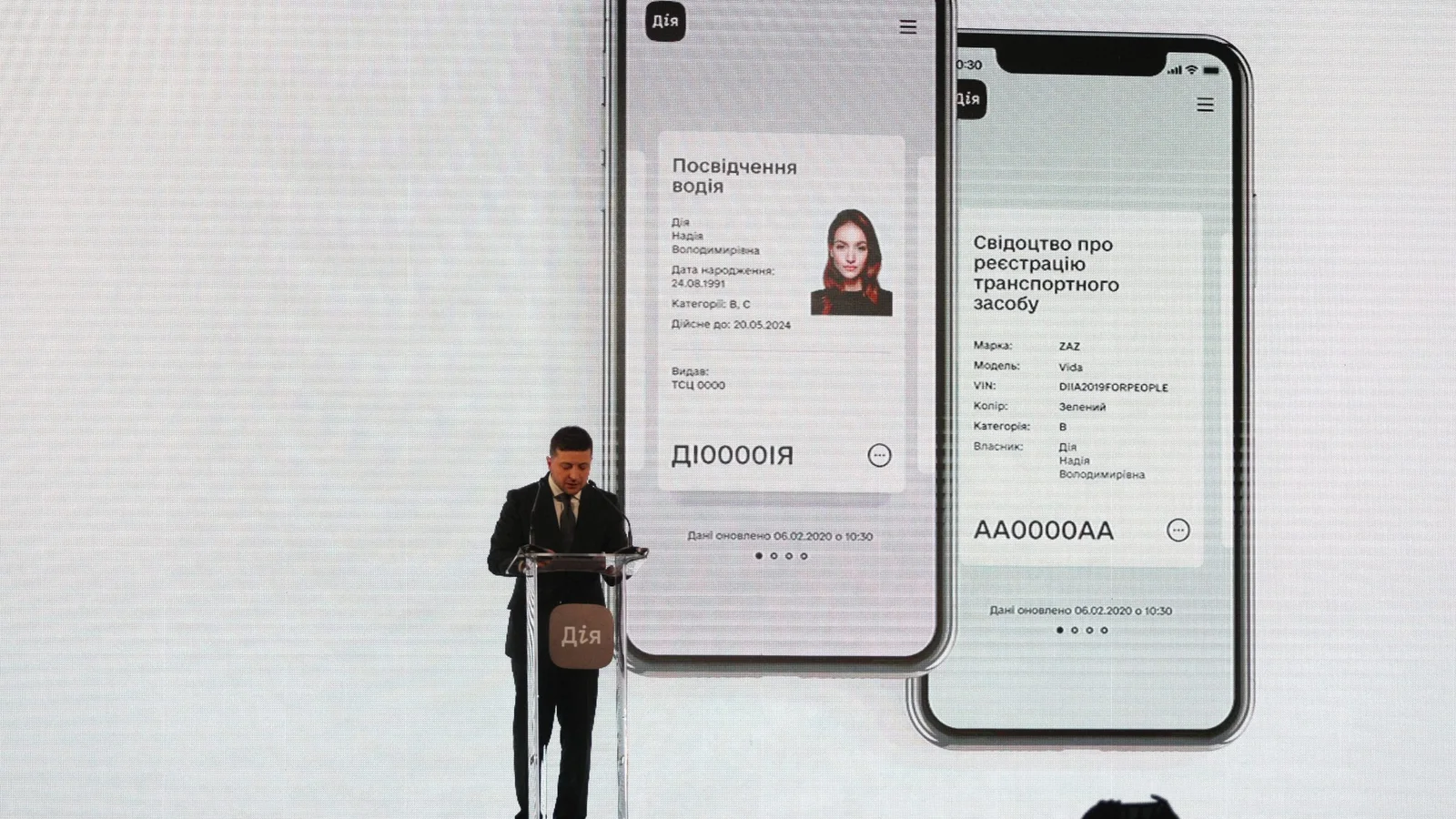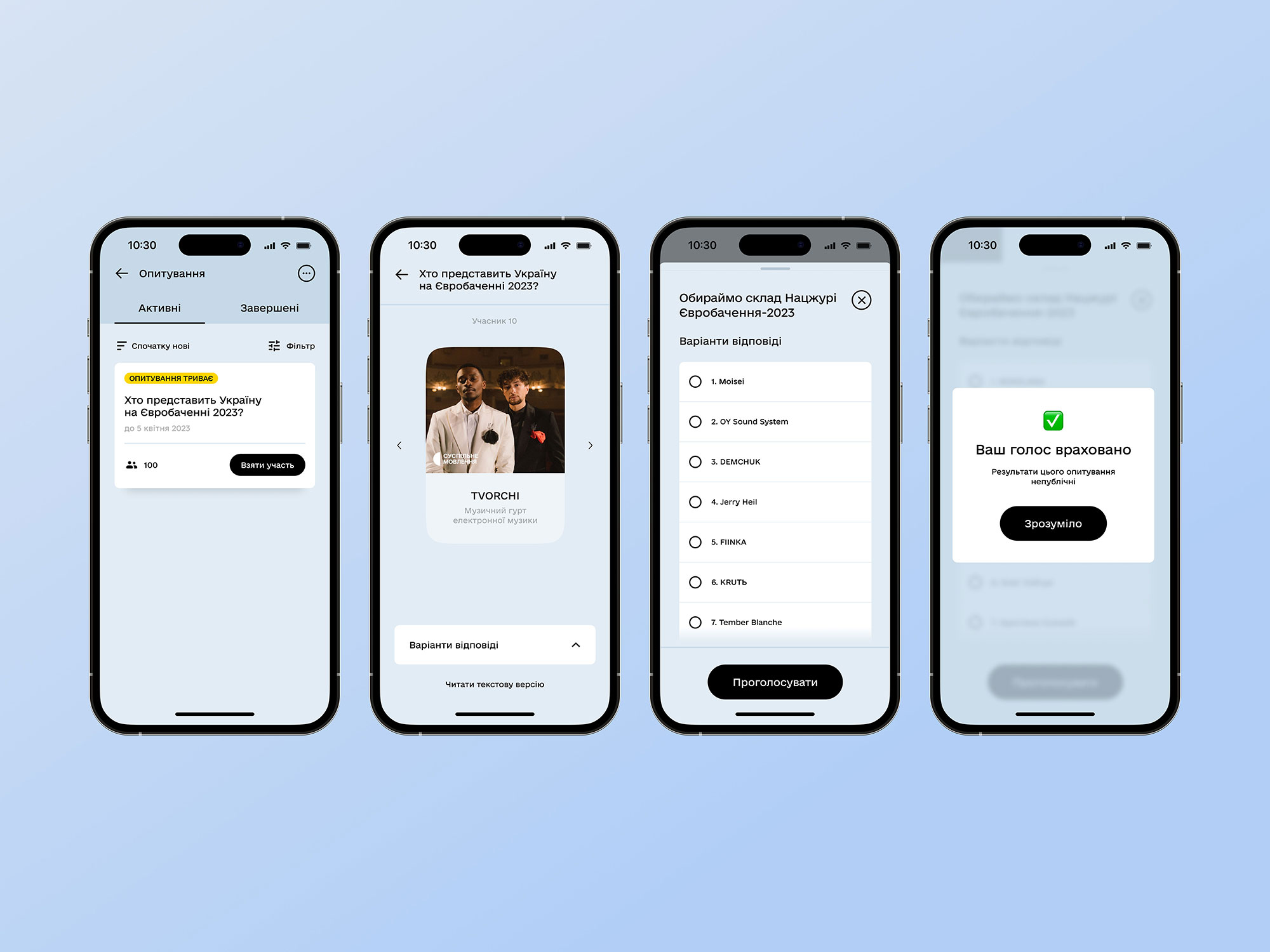



How Diia Became a Symbol of Effective Tech-Driven Public Administration.
Before 2019, Ukraine had very limited access to digital public services. The first breakthrough came in 2015 when digitization became a key part of anti-corruption reforms. This led to the creation of ProZorro (in Ukrainian прозоро - "transparently") - an auction platform for public tenders, considered one of the most effective tools for fighting corruption in administration. The system was developed as a public-private partnership, drawing on the experience of a similar Georgian solution and supported by its original creators. Other public services appeared, but there was no integrated system combining all state services in a single application.
The second and most important digital breakthrough occurred after the 2019 presidential election. Volodymyr Zelensky took office, with one of his campaign slogans being "State in a smartphone". Soon after the parliamentary elections, a younger generation of politicians entered power alongside Zelensky. They understood the potential of technology not only as a development tool but also as a way to overcome Ukraine’s long-standing issues: lack of transparency, inefficiency, and a complex, often archaic bureaucracy.
The newly established Ministry of Digital Transformation of Ukraine was headed by Mykhailo Fedorov, born in 1991. He became the youngest minister in Ukraine’s history. Previously a digital marketing entrepreneur, he had been involved in Zelensky's online presidential campaign. Fedorov set out to digitize as many public services as possible by 2024. He was given full autonomy to build the ministry from scratch, establishing a startup-like work culture in government - small teams, rapid iterations, and fast decision-making.

Concept work on the Diia app began in 2019. The first official presentation of the concept took place during Ukraine’s largest IT event, iForum, delivered by President Zelensky. "Diia" in Ukrainian is the word Дія, meaning "action", and in the context of state administration it serves as an acronym - Держа and Я, meaning "The State and Me".
The Ministry of Digital Transformation initiated the project and was responsible for oversight, management, and the strategy of the national digital infrastructure. The ministry actively built international partnerships, drawing lessons from the digital transformations of Estonia and Israel. Funding for app development was secured from the United Kingdom, Switzerland, and the United States.
The key technology partner in developing Diia was the Ukrainian company Kitsoft, with 15 years of experience in the GovTech sector. Kitsoft provided its proprietary low-code platform using AI. The Liquio platform is the foundation of the state ecosystem. It enables rapid creation and integration of new services without coding each one separately, which significantly accelerated the app’s development.
Engineers and specialists from the Ukrainian branch of EPAM Systems participated in building the mobile application. The collaboration with the ministry was on a non-profit basis. The team completed the beta phase in 3 months. Their work included implementing digital driver's licenses and vehicle registration certificates, as well as secure user authentication through BankID using Ukrainian banks PrivatBank and MonoBank.
Branding and visual identity were handled by the agencies Fedoriv and Spiilka. Fedoriv created the "Diia" brand, which won a Bronze Lion at Cannes Lions in 2022 in the Creative Business Transformation category. The design studio Spiilka received a Red Dot Design Award in 2020 for the UX/UI design.
Work on the first version of the Diia platform lasted 6 months. Beta testing began at the end of 2019, and the first version was launched at the beginning of 2020. The premiere took place during a conference by President Zelensky on February 6, 2020, where both the mobile app and Diia portal were presented. Within the first two months, the platform reached over 2 million users.

A Bug Bounty program was conducted to test the security of the Diia app, offering rewards for discovering system vulnerabilities. Aside from two minor flaws, no critical issues were found. There were reports of personal data being sold via Telegram, but the Ministry of Digital Transformation firmly denied any connection to Diia.
In October 2020, during the first Diia Summit event, the new version Diia 2.0 was presented. The platform was expanded with new functionalities, including the ability to share documents with other users. By that time, the portal had received over 50 new public services.
In 2021, President Zelensky announced the "paperless" strategy, which became a key part of Ukraine’s digital transformation. The goal was to transfer as many public services as possible to the Diia platform. As part of this strategy, digital documents in Diia were granted the same legal status as their physical counterparts. Public institutions were prohibited from requiring paper versions of documents from citizens.
Compared to European countries, Ukraine did not impose long or strict COVID restrictions. However, the pandemic forced changes in the operational mode of state administration, accelerating the transfer of additional public services to Diia. It also increased citizen engagement with the platform, strengthening trust in digital services.
In 2022, the war with Russia slowed the development of civilian services. The focus shifted to citizen safety, including war-related alerts, reporting suspicious activity, applying for war damage compensation, and accessing social programs. The project was expanded with new components - Diia TV and Diia Radio - which inform citizens about the situation in the country during wartime.
As of now, despite the crisis, the Diia platform operates without major disruptions. In 2023 and 2024, the Ministry of Digital Transformation announced a reward for anyone able to breach the platform’s security. No one has succeeded so far.
During the war, Polish-Ukrainian cooperation led to the creation of diia.pl - an electronic identity document within the Polish government app mObywatel. Despite the name, it is not part of the Diia platform. It serves as an official ID for Ukrainian citizens in Poland and can be used in Polish government offices, at border crossings, and to access healthcare or education.
In 2022, the first international Diia Summit was held during the World Economic Forum in Davos. Minister Fedorov presented a new vision of state digitization under wartime conditions to European digital economy officials.
In 2024, the Ukrainian government adopted a regulation allowing marriages to be conducted online via the Diia platform. Marriages can be fully concluded digitally using electronic signatures, without physical presence in an office. Ukraine became the first country in the world to allow online marriage between two citizens. Within a few days, 416,000 proposals were made through Diia (around 50,000 accepted), 1,247 couples applied for marriage, and 197 couples completed the process.
The Diia platform was built using Liquio - a modular low-code framework developed by Kitsoft. The backend is based on Node.js and TypeScript. The mobile version was developed with React Native. Service logic is modeled as BPMN diagrams, executed by a process engine. User interfaces are generated from Form.IO forms - JSON-configured structures that allow the creation of new services without writing frontend code. This setup enables public services to be created and deployed without the involvement of developers, except when modifying core infrastructure or integrating with external systems. Parts of Diia's backend code have been released under the open-source license (EUPL‑1.2) and are available on GitHub.

The platform's most impactful simplification was the transfer of all personal documents (ID card, driver’s license, passport, student ID, birth certificates, etc.) into the app, along with enabling digital signatures in place of physical ones. Currently, Diia offers over 100 public services accessible via mobile devices and the web portal. The ecosystem is divided into relatively autonomous modules, programs, and services, although the terminology can be inconsistent.
The Diia app also allows citizens to actively participate in public consultations - users can create, browse, and support petitions at the local government level. The platform is also developing tools for electronic voting, both local and national, enabling public input on various issues and increasing civic engagement.
Since 2023, it has been possible to buy and sell a car entirely online. The entire verification and contract process takes place digitally. The platform is integrated with the vehicle registration portal, and after completing the transaction, the new owner receives the technical passport and license plates by mail.
In 2024, the government announced plans to introduce an AI assistant named "Nadiia" into the Diia app, designed to accelerate response to user queries and relieve the customer support center. A voice assistant is scheduled for launch in the first quarter of 2025. The Diia education platform already offers a free course on using artificial intelligence. By 2030, Ukraine aims to be among the top three countries in the world in terms of AI development and implementation.
The view on digital transformation in the post-communist region shows Estonia as the leader in GovTech maturity, but Ukraine stands out with the fastest development pace. While Estonians built their advanced e-government over more than two decades, starting in the early 2000s, Ukraine began dynamic implementations only in 2019 - and achieved significant results in just half a year. In Estonia, nearly the entire population of 1.37 million uses digital services, whereas in Ukraine over 20 million out of 36 million citizens actively use them, and in Poland almost 10 million out of 36 million residents. This shows not only scale but also the speed with which Diia gained user trust.
Digitalization is one of those reform areas that today cannot be called a failure. Ukraine consistently develops the digital state. By 2030, digital transformation may become one of the key engines of the country’s modernization, especially in the context of reconstruction, attracting investments, and supporting new economic sectors. Ukraine’s vision as an innovative digital state is no longer just a marketing slogan - it is a real competitive advantage Kyiv is building even before the war ends.
SOURCES: